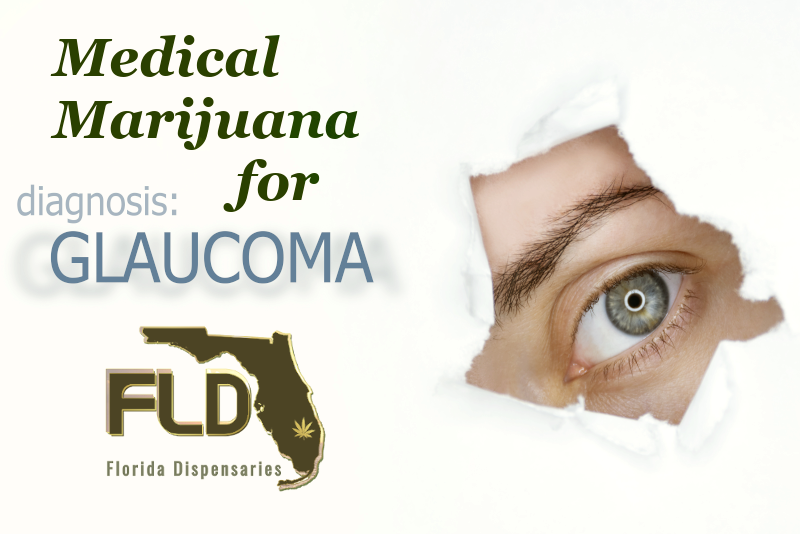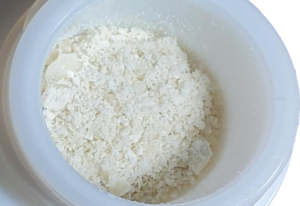

Can Medical Marijuana Be Used To Treat Glaucoma?
Can you get a Florida medical marijuana card for glaucoma? In this post, we’ll talk about how to use marijuana to treat glaucoma, how to find a Florida medical marijuana doctor, how to get a medical marijuana card in Florida, and where to find medical marijuana dispensaries in Florida.
Glaucoma is actually one of the diseases that is specifically listed among the medical conditions for which medical marijuana doctors in Florida may approve patients for a medical marijuana card. The card gives patients access to purchase medicine at Medical Marijuana Treatment Centers (MMTCs) throughout the Sunshine State.
One of the most prevalent eye diseases in the world, glaucoma is often referred to as the silent thief of sight. In fact, glaucoma is the number one cause of incurable blindness in the U.S.
Many U.S. states with medical marijuana programs have given the green light to countless glaucoma patients based on the dramatic, positive results attributed to medical marijuana. Today, thousands of glaucoma patients in Florida swear by medical marijuana for treatment of their symptoms.
What are the signs and symptoms of glaucoma?
Given the insidious nature of glaucoma, early detection can be challenging. The common symptoms are directly related to elevated eye pressure.
One version of the condition is called open-angle glaucoma. This type of glaucoma is virtually painless and extremely difficult to diagnose. This is why annual eye exams are of the utmost importance.
Symptoms of closed-angle glaucoma can include nausea, vomiting, halos around lights, red eyes, failing vision, and stabbing eye pain. In some rare cases, the pupil will take on an oval-shape. However, only one out of ten patients with this aggressive version of glaucoma will develop these symptoms.
Furthermore, external factors such as diabetic retinopathy, inflammation of the middle layer of the pigmented vascular eye structure, and prolonged steroid use may be responsible for a condition known as secondary glaucoma.
When medical experts detect increased eye pressure with no obvious tissue damage they refer to this anomaly as ocular hypertension or OHT. Patients exhibiting these signs of OHT require frequent eye examinations as this indicates an increased risk of developing glaucoma.
How is glaucoma treated?
With early detection, several options are available to alleviate eye pressure and subsequently avoid vision loss. The progression of glaucoma can be controlled and sometimes halted with treatments designed specifically to reduce the pressure of fluids within the eyeball.
There are several medications for the treatment of glaucoma that reduce intraocular pressure and effectively prevent or retard nerve damage and vision impairment.
In most cases, the initial treatment used for open-angle glaucoma is an eye drop medication. These drops effectively increase fluid drainage from the eye, or significantly reduce the production of aqueous fluid.
A more invasive approach is laser surgery. And in more advanced cases incisional surgery is the best option. Recently, however, innovative, less-invasive surgeries have been developed.
Some patients do not respond favorably to any of the standard treatments and surgical procedures used to treat glaucoma. For these patients, especially, medical marijuana might prove to be the safest and most effective option for treating glaucoma. Many medical marijuana patients are using cannabis in tandem with traditional pharmaceuticals and surgical procedures.
How does medical marijuana help treat glaucoma?
Can medical marijuana help to prevent glaucoma or reduce incidences? Interestingly, cannabis has been prescribed by doctors for over 25 years in some U.S. states. And incredibly, over the same period, the incidence of glaucoma-induced blindness has decreased by 50 percent.
Both marijuana and non-intoxicating, cannabinoid-rich strains of hemp have been researched and studied since the 1970s. These studies thoroughly investigated the plant’s efficacy in alleviating the symptoms of glaucoma by reducing intraocular pressure. The findings aren’t entirely clear and the jury is still out when it comes to the efficacy of medical cannabis for glaucoma treatment, however many researchers believe in its ability to reduce intraocular pressure.
The National Eye Institute published a study in the 1970s reporting that inhaled or oral medical cannabis effectively lowered intraocular pressure. And the American Academy of Ophthalmology released a position statement in 2003, stating, “Some derivatives of marijuana did result in lowering of IOP when administered orally, intravenously or by smoking, but not when topically applied to the eye.”
And there is burgeoning support among Florida medical doctors for the use of cannabinoid-based medicines for the possible prevention and treatment of glaucoma.
So how does cannabis work to reduce eye pressure and prevent or slow the progression of glaucoma?
Delta-9 tetrahydrocannabinol (THC) is the intoxicating active compound produced in marijuana. And cannabidiol (CBD) is a non-intoxicating cannabinoid compound found in both marijuana and hemp. While both of these cannabinoids are believed to have potent neuroprotective properties, CBD, in particular, has been shown to directly reduce eye pressure.
All human bodies come equipped with an endocannabinoid system (ECS) consisting of receptors on the surface of cells throughout the body. The human body also produces its own set of cannabinoid compounds.
Tissues responsible for regulating eye pressure contain multiple cannabinoid receptors. Cannabinoid-based treatments designed to specifically target these receptors are being developed by researchers.
One of many naturally occurring endocannabinoids, anandamide plays a vital role in regulating eye pressure. It is believed that cannabidiol and another cannabinoid called cannabigerol (CBG) can mimic anandamide to some extent and temporarily reduce ocular pressure.
Note: In the not-to-distant future, CBD drops may be developed for glaucoma patients. At this time, putting CBD drops in the eyes is not recommended.
How to get a Florida medical marijuana card for glaucoma
The process of getting a medical marijuana card in Florida is straightforward. The first step is to contact a local Florida-certified medical marijuana doctor and make an appointment to be examined.
For glaucoma patients, it’s important to have records from an eye specialist that prove the patient has been diagnosed with glaucoma or has OHP and is at risk of developing glaucoma.
Assuming the patient is approved, the healthcare provider will generally assist the patient in submitting a Florida medical marijuana card application.
Once the state of Florida approves a patient’s application, a Florida medical marijuana card will be issued giving the patient full access to Florida dispensaries. Patients may either visit a dispensary in person or order online for curbside pickup or home delivery.
Also, keep in mind that hemp-derived CBD products can be purchased without a Florida medical marijuana card.










